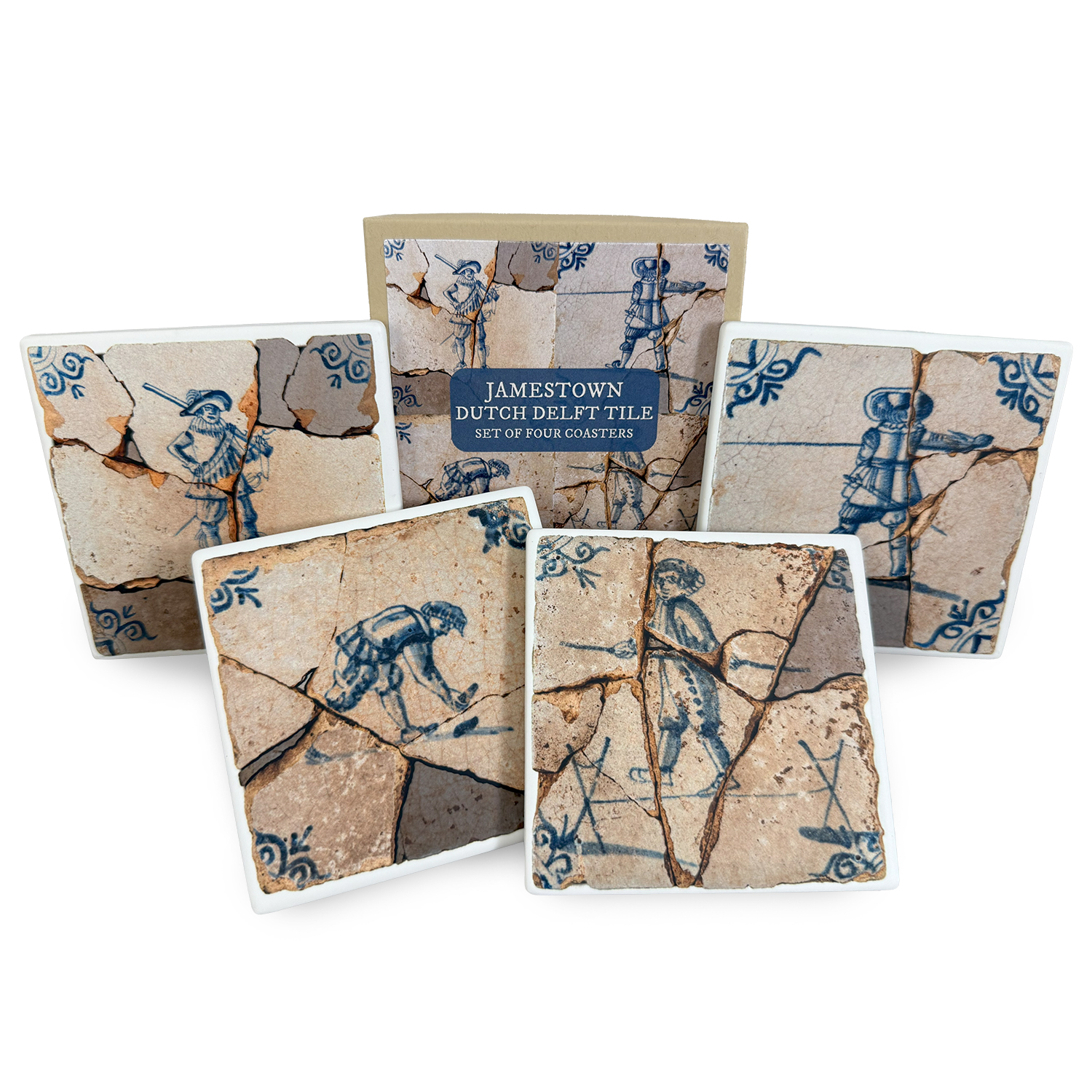Description
The tiles that inspired these coasters were extremely popular in the Netherlands in the 17th century, commonly used as decorative and protective elements surrounding fireplaces. Their use continued in the same way in colonial Virginia throughout the 17th and 18th centuries. The ox-head corner motifs and figures present on the tiles recovered from Jamestown suggest that most were produced and used between 1625-1650.
Dutch Delft tiles were made by pressing clay into a mold, creating an approximately 5 x 5″ square. Later they would be coated with a tin glaze, producing the opaque white background perfectly suited for various hand-painted motifs. The craftsmen who painted the tiles used many colors, however all of the tiles in the Jamestown collection were painted simply with cobalt blue.
A Note About Cross-Mending: In artifact conservation, ‘cross-mending’ or mending is the term used to refer to placing together and adhering pieces of an item, like ceramic fragments (called sherds), glass shards, etc. This process is similar to putting a puzzle together, and it allows conservators to see the more complete version of a vessel or other object.
These Dutch Delft tiles have been cross-mended with the pieces our Jamestown Rediscovery staff has recovered, though some are still missing. Through the use of digital software we can imagine what a more complete version of each tile might have looked like, visible on the coaster as a shaded section.
Material: Sandstone with cork backer
Dimensions: 4″
Artifactual Inspiration

Left: This tile depicts a soldier carrying a musket. He wears a cross-body belt with bandoliers, small containers which would have held his gunpowder. The soldiers at Jamestown likely appeared similar to this figure, as both elements of muskets and bandoliers have been recovered by archaeologists at the site.

Right: This tile depicts a soldier facing away from us and brandishing a pike, a long spear-like weapon. The figure is likely inspired by or even copied from engravings produced by the late 16th – early 17th century Dutch artist Jacob de Gheyn.

Left: This tile depicts a man playing a game, perhaps the game of quoits. Similar to horseshoes, quoits players throw metal rings toward a spike, attempting to catch the ring onto the spike.

Right: This tile depicts a man walking on a tightrope. He even carries a balancing pole! Tightrope walking has long been a display of skill and a form of entertainment, including during high status events such as the 1547 coronation of King Edward VI at Westminster.













